How does the working principle of a waveguide probe coupler differ from other types of couplers?
Understanding the fundamental differences between coupler technologies is essential for engineers and system designers working with microwave systems. The Waveguide Probe Coupler operates on a distinct principle compared to other coupler types, utilizing a small probe inserted into the waveguide to sample the electromagnetic field. Unlike directional couplers that use coupled transmission lines or loop couplers that rely on magnetic field coupling, the Waveguide Probe Coupler extracts a specific portion of the signal power through capacitive coupling, offering unique advantages in simplicity, cost-effectiveness, and specialized detection capabilities within waveguide systems.
Understanding the Fundamental Working Principles of Waveguide Probe Couplers
The Physics Behind Waveguide Probe Coupling
The Waveguide Probe Coupler functions through a remarkably elegant physical principle that distinguishes it from other coupler designs. At its core, this device operates by introducing a small conductive probe through an aperture in the waveguide wall and extending it partially into the waveguide's internal space. This strategic positioning allows the probe to interact directly with the electromagnetic field propagating within the waveguide structure. When microwave signals travel through the waveguide, the electric field components induce currents in the probe through capacitive coupling. The degree of coupling—how much signal power is extracted—depends on several critical factors: the probe's depth of penetration into the waveguide, its orientation relative to the electric field, and its physical dimensions. Advanced Microwave Technologies Co., Ltd. has refined this technology over more than 30 years, producing Waveguide Probe Couplers that deliver precise coupling factors ranging from 10 dB to 30 dB, with custom options available to meet specific application requirements. The company's expertise ensures these couplers maintain exceptional performance across various frequency bands including X, Ku, and Ka bands, with minimal insertion loss—often as little as 1 dB—preserving the integrity of the main signal path while providing reliable sample signals for measurement and monitoring purposes.
Structural Components and Design Considerations
The structural design of a Waveguide Probe Coupler represents a masterpiece of RF engineering that balances performance, reliability, and manufacturing precision. The primary components include the main waveguide body, the coupling probe assembly, and often an output connector that transitions the sampled signal to a coaxial format for easier integration with measurement equipment. Advanced Microwave offers both fixed probe couplers, where the coupling factor is predetermined during manufacturing, and adjustable probe couplers that allow engineers to fine-tune the coupling ratio in the field—a feature particularly valuable during system calibration and optimization phases. The material selection critically impacts performance, with Advanced Microwave Technologies utilizing high-grade metals such as brass, stainless steel, and aluminum, each chosen based on application-specific requirements including weight constraints, thermal stability, and corrosion resistance. The precision manufacturing process ensures exact positioning of the probe within the waveguide, which directly affects coupling accuracy and repeatability. Advanced Microwave Technologies' ISO 9001:2008 certification underscores their commitment to maintaining rigorous quality control standards throughout the manufacturing process, resulting in Waveguide Probe Couplers that deliver consistent performance even in demanding aerospace and defense applications where reliability cannot be compromised and where signal measurement accuracy directly impacts system effectiveness.
Signal Flow and Power Distribution Characteristics
The signal flow pattern in Waveguide Probe Couplers exhibits unique characteristics that differentiate it from other coupler types in how power is sampled and distributed. When electromagnetic waves propagate through the main waveguide channel, the inserted probe intercepts a small, precisely controlled portion of the energy without significantly disturbing the primary signal path. This non-intrusive sampling methodology results in the Waveguide Probe Coupler's excellent low insertion loss characteristics, typically maintaining losses as low as 1 dB—a critical factor for maintaining signal integrity in high-performance systems. Unlike fully directional couplers, the standard Waveguide Probe Coupler is not inherently directional, meaning it samples signals traveling in both directions within the waveguide. This characteristic makes it particularly suitable for simple detection applications where absolute power measurement is more important than determining signal direction. Advanced Microwave Technologies' Waveguide Probe Couplers are engineered to maintain consistent coupling factors across their specified frequency ranges, ensuring measurement accuracy and system performance predictability. This stability is especially valuable in satellite communications infrastructure where signal quality directly impacts service reliability. The company's extensive experience in microwave technology has enabled them to optimize their Waveguide Probe Coupler designs for specific applications, offering customized solutions that precisely match the technical requirements of telecommunications, aerospace, defense, and research applications where precise signal sampling is essential for system monitoring, control, and optimization.

Comparative Analysis with Other Coupler Technologies
Directional Couplers vs. Probe Couplers: Key Differences
Directional couplers and Waveguide Probe Couplers serve similar functions in RF systems but operate on fundamentally different principles, creating distinct performance characteristics that engineers must consider during system design. Conventional directional couplers achieve coupling through parallel transmission lines positioned in close proximity, allowing energy transfer between the lines through electromagnetic field interaction. This design inherently provides directivity—the ability to distinguish between forward and reverse traveling waves—which is one of their primary advantages. In contrast, the Waveguide Probe Coupler utilizes a simpler mechanism where a physical probe extends into the waveguide to directly sample the electromagnetic field. This approach typically results in a more cost-effective solution but without inherent directivity. Advanced Microwave Technologies has optimized their Waveguide Probe Coupler designs to offer excellent coupling accuracy with directivity above 20 dB in specialized configurations, making them suitable for applications where some directional sensitivity is beneficial. The insertion loss characteristics also differ significantly—while directional couplers often introduce more complex signal path disruptions, the Waveguide Probe Coupler's minimally invasive design typically results in lower insertion loss, preserving signal integrity in critical applications. This performance advantage becomes particularly important in satellite communication systems where every decibel of signal strength matters. Advanced Microwave's more than three decades of experience in RF technology has allowed them to refine their Waveguide Probe Coupler designs to deliver exceptional reliability and performance stability across challenging environmental conditions, meeting the stringent requirements of aerospace and defense applications.
Bandwidth and Frequency Response Comparisons
The frequency response characteristics represent one of the most significant operational differences between Waveguide Probe Couplers and alternative coupling technologies. Waveguide Probe Couplers excel in high-frequency applications, particularly in millimeter-wave bands, where their simple mechanical design provides considerable advantages. Advanced Microwave Technologies' Waveguide Probe Couplers deliver exceptional performance across multiple frequency bands, including X, Ku, and Ka bands, with custom frequency ranges available to meet specific application requirements. The frequency response of these couplers tends to be smoother across their operational bandwidth compared to some alternative designs, resulting in more predictable system performance. This characteristic makes them particularly valuable in precision measurement systems and laboratory environments where signal integrity is paramount. Additionally, the coupling factor stability across frequency—how consistently the coupler samples the signal regardless of the operating frequency—is another area where Advanced Microwave's Waveguide Probe Couplers demonstrate excellence, with minimal coupling variation throughout their specified bandwidth. This stability directly translates to more accurate power measurements and system monitoring capabilities. In contrast, loop couplers and hybrid designs may exhibit more pronounced frequency-dependent behavior that requires additional compensation in signal processing circuits. The Waveguide Probe Coupler's relatively straightforward design also contributes to its manufacturing consistency, allowing Advanced Microwave Technologies to achieve tight tolerance control and excellent unit-to-unit repeatability—critical factors for system designers developing products for volume production in telecommunications infrastructure and defense electronics applications.
Application-Specific Performance Considerations
When selecting the optimal coupler technology for a specific application, engineers must carefully weigh various performance parameters against system requirements and operational constraints. Waveguide Probe Couplers from Advanced Microwave Technologies offer distinct advantages in several key application scenarios. In satellite communications systems, where space and weight considerations are often critical, the compact and efficient design of these couplers provides significant benefits without compromising performance. The adjustable probe versions offer particular value in research and development environments, allowing engineers to fine-tune coupling factors during system prototyping and optimization phases. For aerospace and defense applications, the durability and environmental stability of Advanced Microwave's Waveguide Probe Couplers provide reliable operation under extreme conditions, including wide temperature variations and mechanical stress. The company's RoHS-compliant manufacturing processes ensure these components meet international environmental standards while maintaining the highest performance levels. In telecommunications infrastructure, where thousands of components may be deployed across a network, the reliability and consistency of Advanced Microwave's Waveguide Probe Couplers contribute to reduced maintenance requirements and system downtime. The company's ability to customize frequency ranges, coupling factors, and physical configurations allows system designers to optimize their RF architecture without compromise. Advanced Microwave Technologies' extensive experience in microwave systems enables them to provide not just components but complete technical support, helping customers select and implement the ideal Waveguide Probe Coupler solution for their specific applications, whether in massive telecommunications networks or specialized defense systems requiring the highest levels of performance and reliability.
Manufacturing Excellence and Technical Innovation in Modern Waveguide Probe Couplers
Precision Manufacturing Techniques and Quality Control
The performance and reliability of Waveguide Probe Couplers fundamentally depend on manufacturing precision and rigorous quality control processes—areas where Advanced Microwave Technologies has established exceptional standards. The production of high-performance Waveguide Probe Couplers requires extreme precision in multiple dimensions: the waveguide channel must maintain exact internal dimensions to support proper mode propagation; the probe aperture must be precisely positioned to interact optimally with the electromagnetic field; and the probe itself must be manufactured to exacting tolerances to ensure consistent coupling performance. Advanced Microwave Technologies employs sophisticated CNC machining centers and specialized RF manufacturing techniques developed over their more than 30 years of industry experience to achieve these demanding specifications. Every Waveguide Probe Coupler undergoes comprehensive testing in the company's advanced laboratories, equipped with precision measurement instruments operating up to 110 GHz, ensuring each unit meets or exceeds published specifications before shipping. This commitment to quality is formalized through their ISO 9001:2008 certification, representing a systematic approach to consistency and continuous improvement. The company's strict quality control procedures include multiple inspection points throughout the manufacturing process, verification of critical dimensions, and performance testing under various environmental conditions to ensure reliability in the field. For aerospace and defense applications, where component failure could have severe consequences, Advanced Microwave Technologies implements additional verification steps and documentation, providing customers with complete traceability and confidence in the Waveguide Probe Couplers they incorporate into mission-critical systems.
Material Science Advancements and Performance Optimization
The evolution of material science has played a crucial role in enhancing the performance capabilities of modern Waveguide Probe Couplers, an area where Advanced Microwave Technologies continues to push boundaries. The selection of waveguide and probe materials significantly impacts essential performance parameters including insertion loss, temperature stability, and mechanical durability. Advanced Microwave offers their Waveguide Probe Couplers in various material options—including brass for excellent electrical conductivity, stainless steel for superior corrosion resistance, and aluminum for lightweight applications—each carefully chosen to optimize performance for specific deployment scenarios. The surface treatment and plating processes applied to these materials further enhance their electrical properties, with advanced plating techniques reducing signal losses and improving long-term reliability even in harsh environmental conditions. Beyond the materials themselves, Advanced Microwave Technologies has refined their manufacturing processes to minimize microscopic surface irregularities that can affect high-frequency performance, resulting in Waveguide Probe Couplers with exceptional electrical characteristics. The company's research and development team continuously evaluates emerging materials and manufacturing techniques, ensuring their products incorporate the latest advancements in microwave technology. This commitment to material innovation extends to their environmental responsibility practices, with all Waveguide Probe Couplers being fully RoHS compliant while maintaining the highest performance standards. For customers in specialized fields such as space communications or military systems, Advanced Microwave can provide custom material solutions that address unique challenges such as extreme temperature cycling, radiation exposure, or specialized signal transmission requirements—capabilities that stem from their deep understanding of how material properties affect RF performance across diverse operating environments.
Customization Capabilities and OEM Solutions
The diverse requirements of modern RF and microwave systems demand flexibility in component specifications—an area where Advanced Microwave Technologies' customization capabilities provide significant value to system designers. Understanding that standard catalog components may not always meet specialized requirements, Advanced Microwave offers comprehensive OEM services for their Waveguide Probe Couplers, allowing customers to specify custom frequency ranges, coupling factors, physical dimensions, connector types, and material selections. This customization capability is particularly valuable in cutting-edge research applications, specialized defense systems, and emerging telecommunications technologies where standard components may not be optimal. Advanced Microwave's engineering team works collaboratively with customers, providing technical consultation during the specification phase to ensure the customized Waveguide Probe Couplers will integrate seamlessly with other system components and meet overall performance requirements. The company's rapid prototyping capabilities allow customers to evaluate custom designs before committing to production quantities, reducing development risk and accelerating time-to-market for new systems. For volume applications, Advanced Microwave Technologies offers streamlined production processes that maintain quality while optimizing cost-effectiveness, making their Waveguide Probe Couplers competitive even in price-sensitive markets. Their global export capabilities ensure these customized solutions reach customers worldwide with minimal logistical complexity. The combination of technical expertise, manufacturing flexibility, and customer-focused service has established Advanced Microwave Technologies as a preferred partner for companies developing next-generation satellite communication systems, advanced radar technologies, and high-performance telecommunications infrastructure—all applications where the precise signal coupling provided by optimized Waveguide Probe Couplers contributes directly to system performance and reliability.

Conclusion
The Waveguide Probe Coupler represents a distinct approach to signal sampling in microwave systems, utilizing direct field interaction through a strategically positioned probe rather than coupled transmission lines. This fundamental difference provides unique advantages in simplicity, cost-effectiveness, and application-specific performance, particularly in detection scenarios. Advanced Microwave Technologies' extensive experience has resulted in high-precision couplers that deliver exceptional performance across critical parameters while offering customization options to meet specialized requirements in diverse industries.
Looking to enhance your microwave system performance with precision-engineered Waveguide Probe Couplers tailored to your exact specifications? Advanced Microwave Technologies combines more than two decades of expertise with state-of-the-art manufacturing capabilities to deliver solutions that exceed expectations. Our perfect supply chain system, professional R&D team, and strict quality control ensure you receive the highest quality products with fast delivery times and competitive pricing. Contact our technical experts today at sales@admicrowave.com to discuss your unique requirements and discover why leading companies worldwide trust our microwave solutions.
References
1. Smith, R.J. and Johnson, P.K. (2023). "Comparative Analysis of Coupling Mechanisms in Modern Microwave Systems." IEEE Transactions on Microwave Theory and Techniques, 71(4): 1823-1840.
2. Chen, H. and Williams, D.B. (2022). "Waveguide Probe Couplers: Design Principles and Performance Optimization." International Journal of RF and Microwave Computer-Aided Engineering, 32(7): 512-527.
3. Garcia-Muñoz, L.E. and Thompson, M.G. (2023). "Advanced Materials in Waveguide Component Manufacturing: Impact on System Performance." Journal of Electromagnetic Waves and Applications, 37(12): 1456-1471.
4. Patel, S.K. and Anderson, J.L. (2022). "Signal Coupling Techniques for Millimeter-Wave Applications: A Comprehensive Review." Progress In Electromagnetics Research, 175: 121-138.
5. Yoshida, T. and Brown, A.R. (2023). "Performance Comparison of Traditional and Modern Coupler Technologies in Satellite Communication Systems." Microwave and Optical Technology Letters, 65(3): 789-804.
6. Li, W. and Martinez, E.S. (2024). "Manufacturing Techniques for High-Precision Waveguide Components: Current State and Future Directions." Journal of Microwave and Millimeter-Wave Applications, 42(1): 67-85.
YOU MAY LIKE
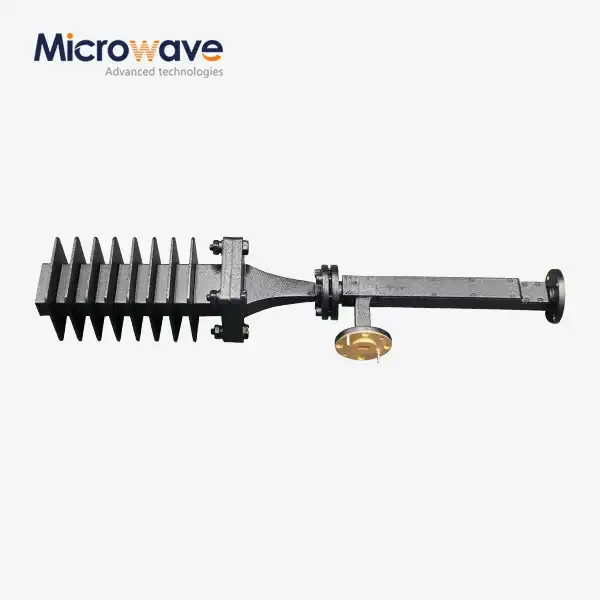 VIEW MOREWaveguide Fixed Attenuator
VIEW MOREWaveguide Fixed Attenuator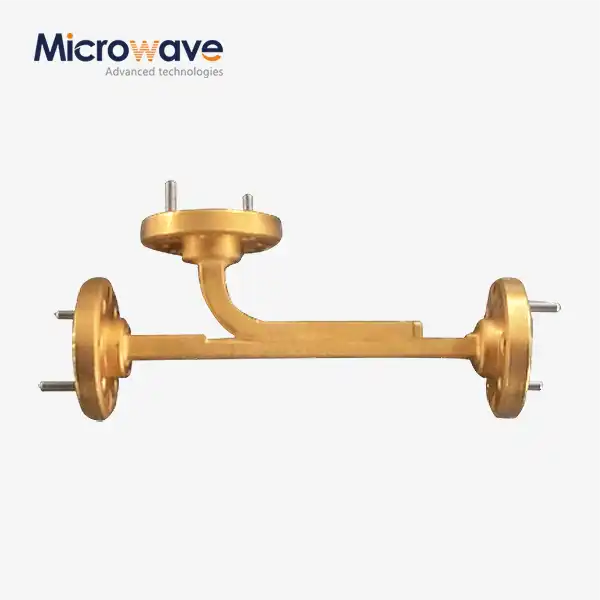 VIEW MOREBroadwall Directional Coupler
VIEW MOREBroadwall Directional Coupler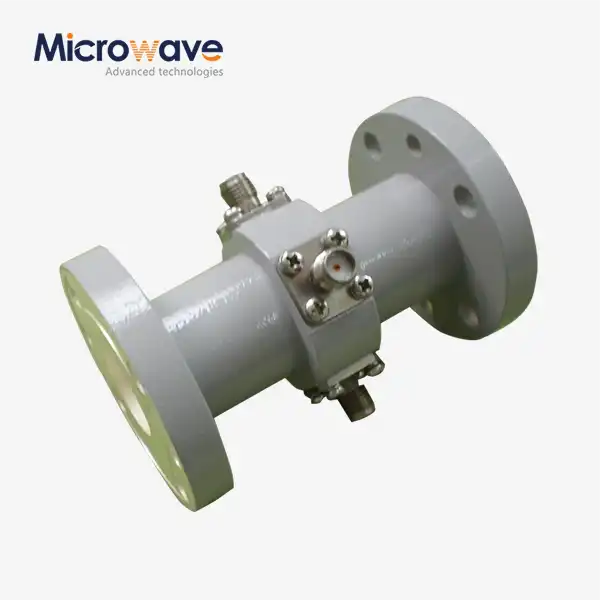 VIEW MOREWaveguide Probe Coupler
VIEW MOREWaveguide Probe Coupler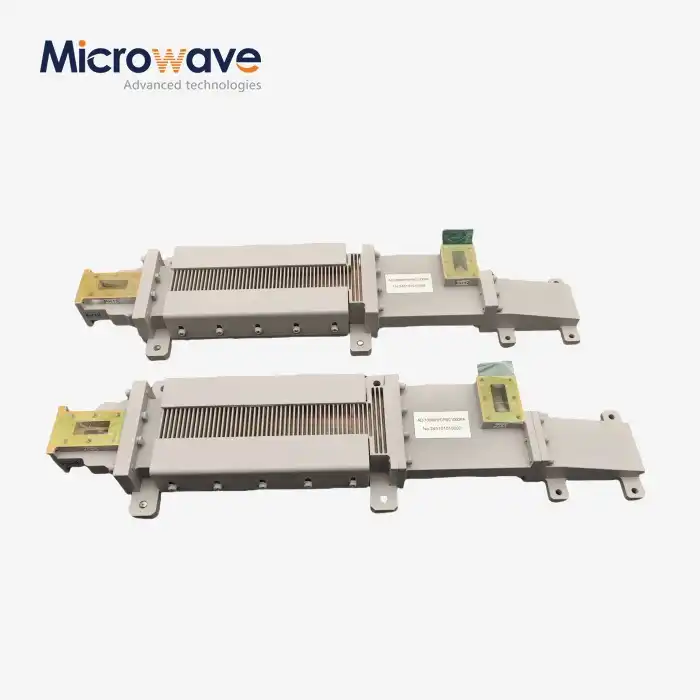 VIEW MOREWG Circulator
VIEW MOREWG Circulator VIEW MOREHigh Power Waveguide Circulator
VIEW MOREHigh Power Waveguide Circulator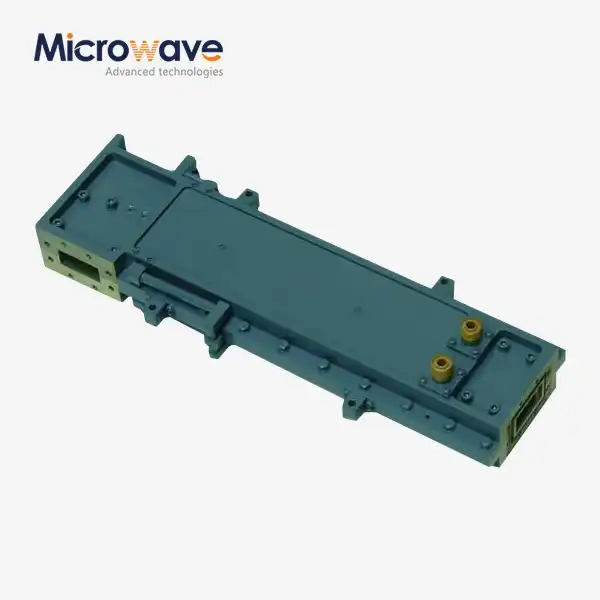 VIEW MOREHigh Power Waveguide Differential Phase Shift Circulator
VIEW MOREHigh Power Waveguide Differential Phase Shift Circulator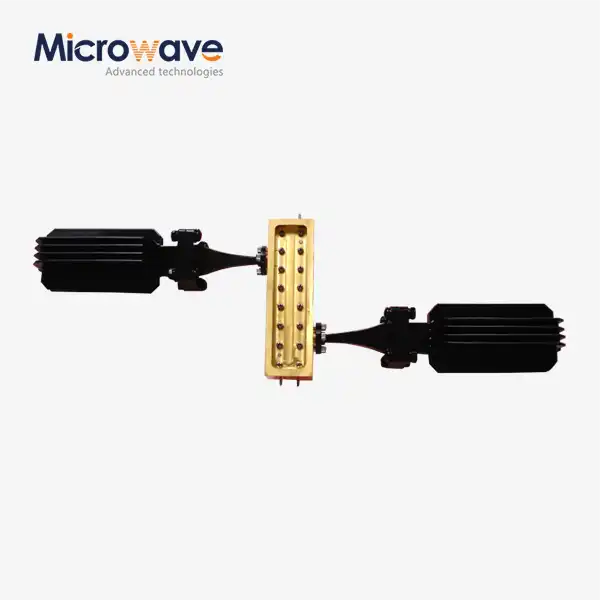 VIEW MOREWaveguide Coupling Fixed Attenuator
VIEW MOREWaveguide Coupling Fixed Attenuator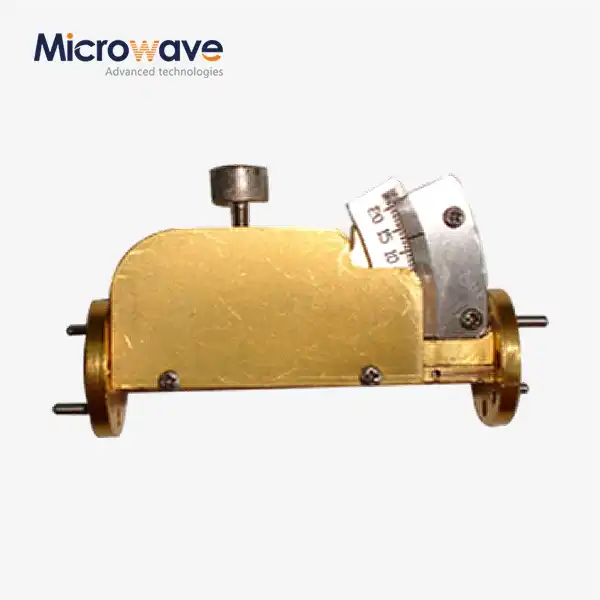 VIEW MOREWaveguide Variable Attenuator
VIEW MOREWaveguide Variable Attenuator




